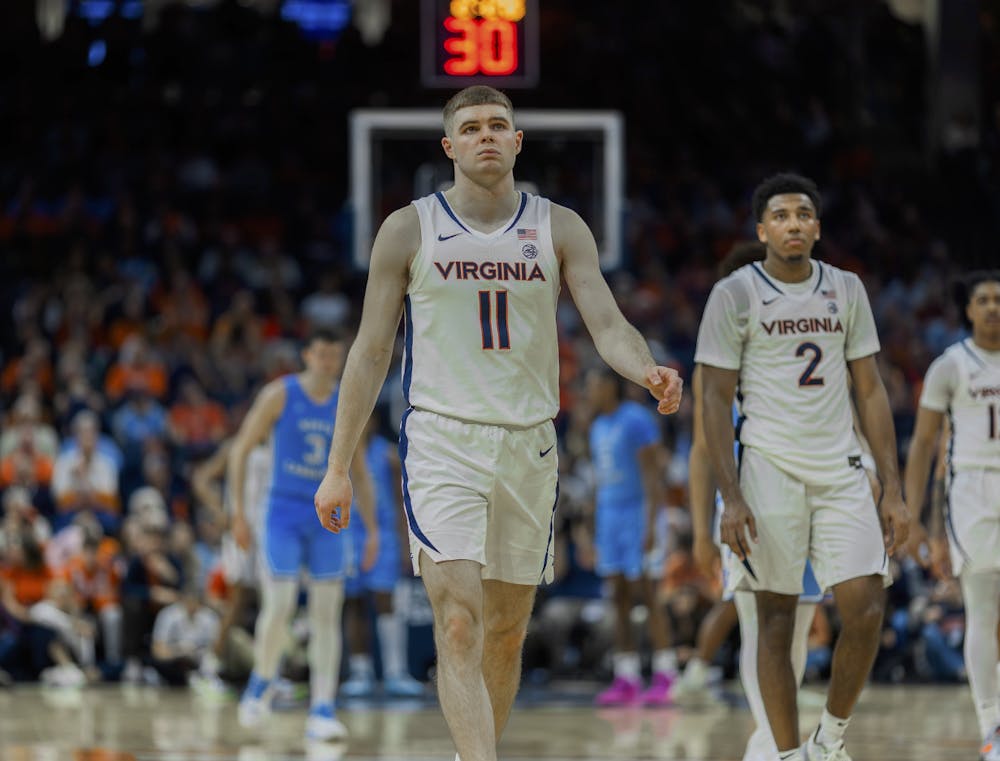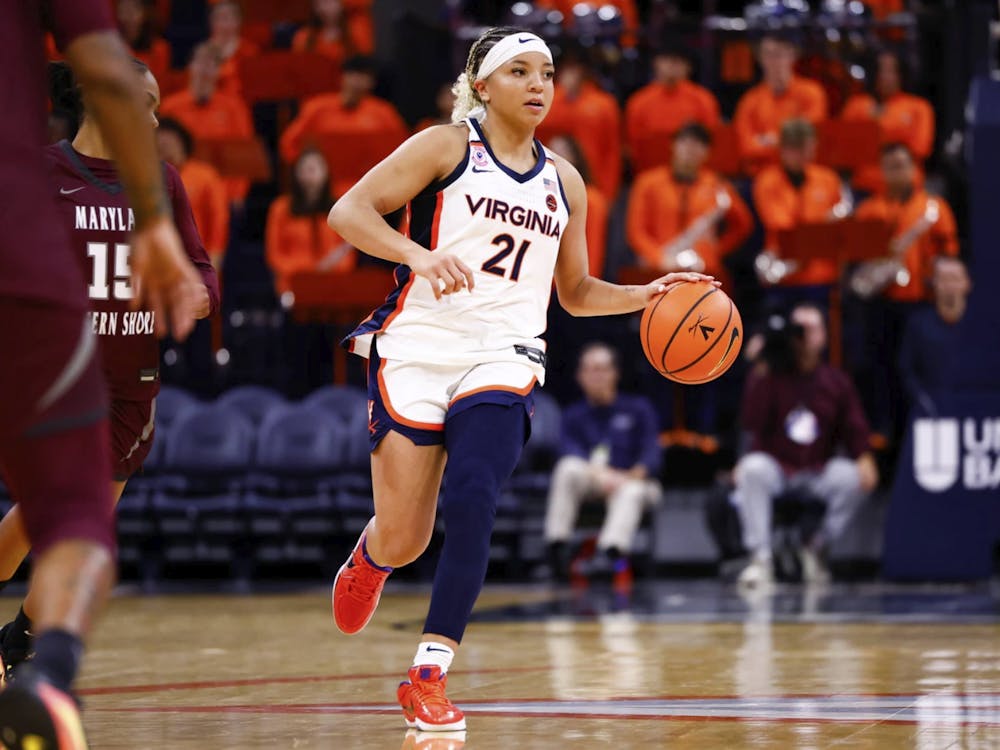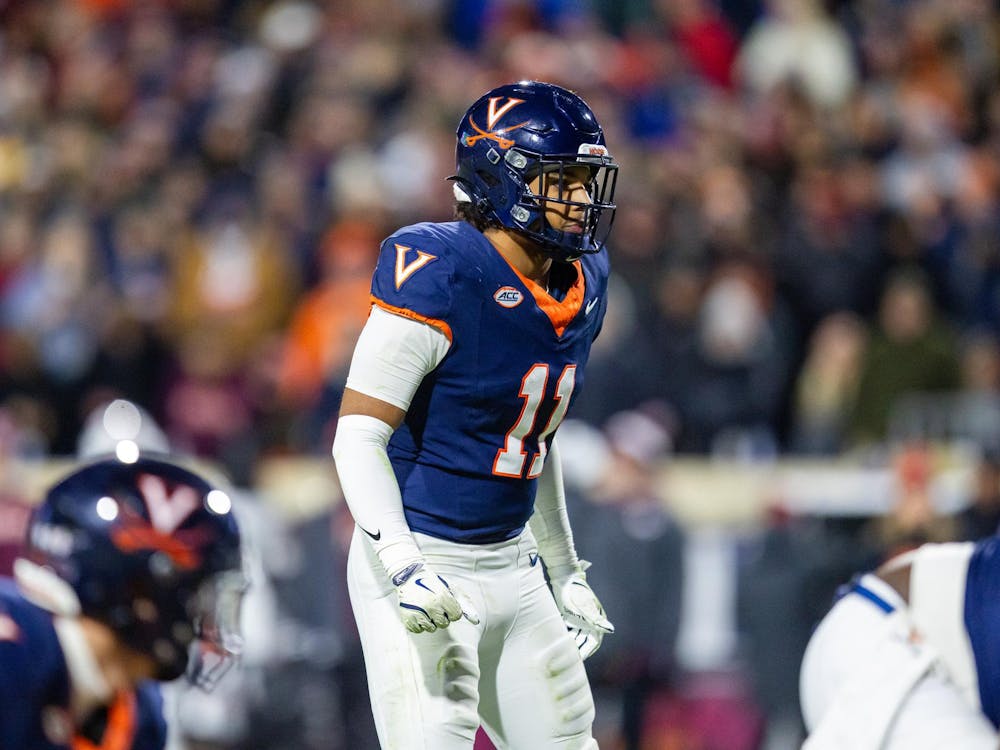When Virginia men’s basketball bows out of the postseason, it usually goes out with a bang — elimination at the hands of a 16-seed, on a buzzer beater or in back-to-back overtimes against underdogs. This year, Coach Tony Bennett’s team went out with a whimper. Virginia’s season ended March 19 in Dayton, Ohio as Colorado State charged to a 67-42 win in the First Four of the NCAA Tournament. The Cavaliers continued their run of tournament failure since the 2019 National Championship — having either missed the tournament entirely or gotten eliminated in its first game — for the fourth year in a row.
For this year’s Virginia team, central weaknesses include free throws, half court offense and interior defense. In particular, poor offense was the canary in the coal mine for Bennett’s squad — and frustratingly plagued the Cavaliers all season long.
Atrocious Free-Throw Shooting
Throughout the season, Virginia attempted 14 free throws per game and made 63.7 percent of them — checking in at 355th in the nation in both statistics. The average free-throw shooting rate nationally is about 70 percent, and Virginia had only two players clear that rate — sophomore guard Isaac McKneely and senior guard Reece Beekman.
Earlier this year, the Cavaliers went 0-10 from the free-throw line at home against Wake Forest, McKneely finally making the eleventh to win the game with only six seconds to go. Against Boston College in the ACC Tournament, the Cavaliers went 8-18 from the line — including a measly 4-10 in the last five minutes of regulation. This allowed the Eagles to equalize on a buzzer beater, only to falter in overtime.
The next night, the same thing happened again. NC State gave Virginia multiple chances to win with late free throws, but Beekman went 1-4 and McKneely missed the front half of a one-and-one in the final seconds. The missed McKneely shot led directly to a second consecutive buzzer-beater, and this time the Cavaliers fell in overtime 73-65. This loss likely relegated them to the First Four play-in round for the NCAA Tournament.
Free throws are among the highest percentage shots in basketball, and failing to convert those easy attempts is a recipe for disaster. This Virginia team found itself struggling heavily to make the simplest shot in basketball.
Stagnant Half Court offense
Hand-in-hand with the Cavaliers’ inability to shoot free throws was their inconsistent spacing and three-point shooting on offense. Despite shooting a respectable 35.8 percent as a team, Virginia had only four viable three-point threats — Beekman, graduate forward Jacob Groves, McKneely and junior guard Taine Murray. This foursome played 70 minutes together and got outscored by an average of 9.2 points per 100 possessions. However, every other lineup Virginia played by definition had two non-shooting players. This left opponents able to pack the paint, sitting in passing lanes and restricting the Cavaliers’ access to the rim. This Virginia team was dire at creating and making shots at the rim, and lineup flaws were a key reason for this.
Even worse is that Virginia ran the fast-break on just 6.3 percent of possessions in 2024 — sitting at the first percentile in Division I — but was actually efficient when they did, with a 70th-percentile field goal percentage. Trading some half court offense for efficient transition scoring could have worked wonders.
These offensive weaknesses culminated in the disgusting performance against Colorado State. Virginia shot 3-17 from beyond the arc and at one point went 59 minutes of real time between field goals. The Rams — 33rd in defensive efficiency via KenPom — held Virginia to its third-lowest scoring output of the year and one of the lowest in NCAA Tournament history. The blocker-mover offense may finally be on the way out.
“We've got to look at things, certainly, from a system standpoint," Bennett said.
Weak Interior Defense
On an efficiency basis, Virginia ran the seventh-best defense in the country — its best since the COVID-shortened 2019-20 season. Beekman was named to the ACC All-Defensive Team and was the conference’s Defensive Player of the Year. Dunn joined Beekman on the All-Defensive Team and has NBA scouts calling him the best defender eligible for this year’s professional draft.
However, Beekman is 6-foot-3, and Dunn is 6-foot-8. While Dunn has several highlight reel blocks, both players are primarily perimeter defenders. This left protection duties closer to the basket to Groves, freshman forward Blake Buchanan and graduate forward Jordan Minor — all merely average defenders. Groves is 6-foot-9 and skinny and not a natural paint protector. Buchanan is 6-foot-11, rail thin and a freshman to boot. Minor has been the best of the bench as a stout enforcer, but he is only 6-foot-8 — leaving him with a disadvantage against taller centers.
This led to elite centers treating the Cavaliers’ paint as their own. In the ACC Tournament, Boston College’s graduate Quentin Post scored 23 points and grabbed 13 rebounds in a loss for the Eagles. The following night, North Carolina State bigs — specifically graduate DJ Burns Jr. and junior Ben Middlebrooks — shredded Virginia for 40 points in the paint. Their dominance over Buchanan and Minor in the post kept the Wolfpack alive in a game where they shot just 3-17 on three-pointers.
Once again, this problem came to a head against Colorado State — the Rams scored 36 points in the paint. Virginia scored 42 points overall, despite playing nobody taller than 6-foot-8 until the game was almost up. Buchanan and Minor both had awful nights, repeatedly jumping at shot fakes and missing rotations. Interior defense was a season-long problem that other teams recognized and easily exploited in the postseason.
Looking Forward
Come November, some of these problems will be fixed. Buchanan will be older and stronger — if he stays in town. Redshirt freshmen and former three-star recruits Anthony Robinson and
Christian Bliss — a tall center and a strong-shooting guard, respectively — will slot into the rotation to add energy and size. Bennett will find a few more mid-major gems in the transfer portal, and his pack-line system will continue to elevate the defense. Offensive experience may be a problem, but those two key redshirts could inject top-tier athleticism into the lineup.
However, Beekman will likely disappear to the NBA in the second round, Dunn will likely become an NBA late first round draft pick and Groves and Minor have run out of eligibility. Surely, transfer portal departures are coming — sophomore guard Leon Bond III will almost certainly be one of them after receiving little playing time despite his offensive prowess.
Furthermore, only two recruits are coming in this year, and just one — four-star forward Jacob Cofie — has a chance to make an immediate impact. Guard Ishan Sharma also boasts strong potential but will likely redshirt, following the mold of young guards like Bliss. The problems that plagued Virginia men’s basketball may therefore carry over into the 2024-25 season, and Bennett and his staff clearly have a long offseason ahead — one that will be marred with uncertainty and lingering disappointment.







